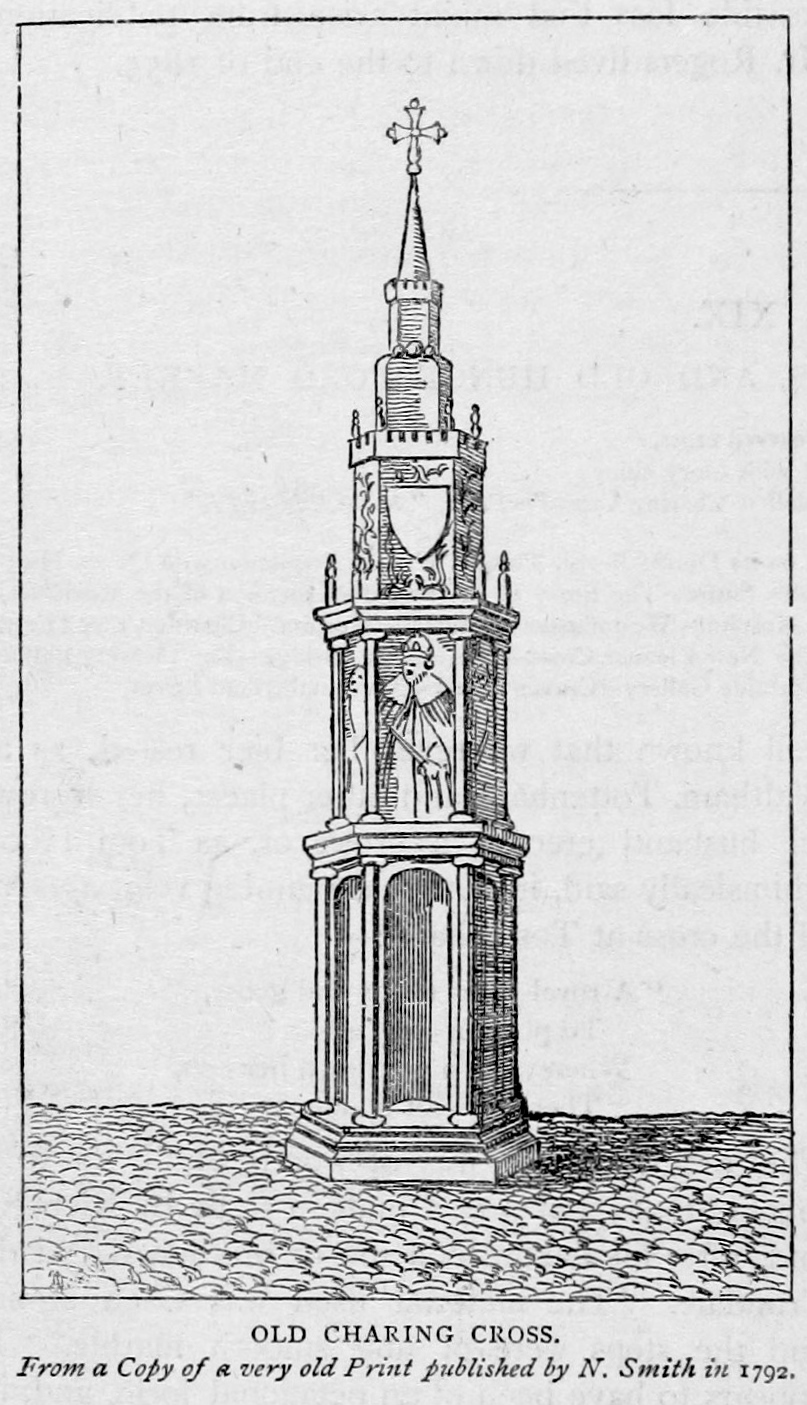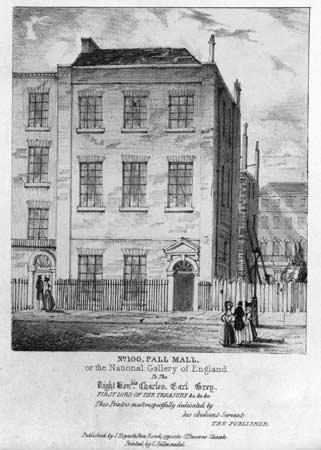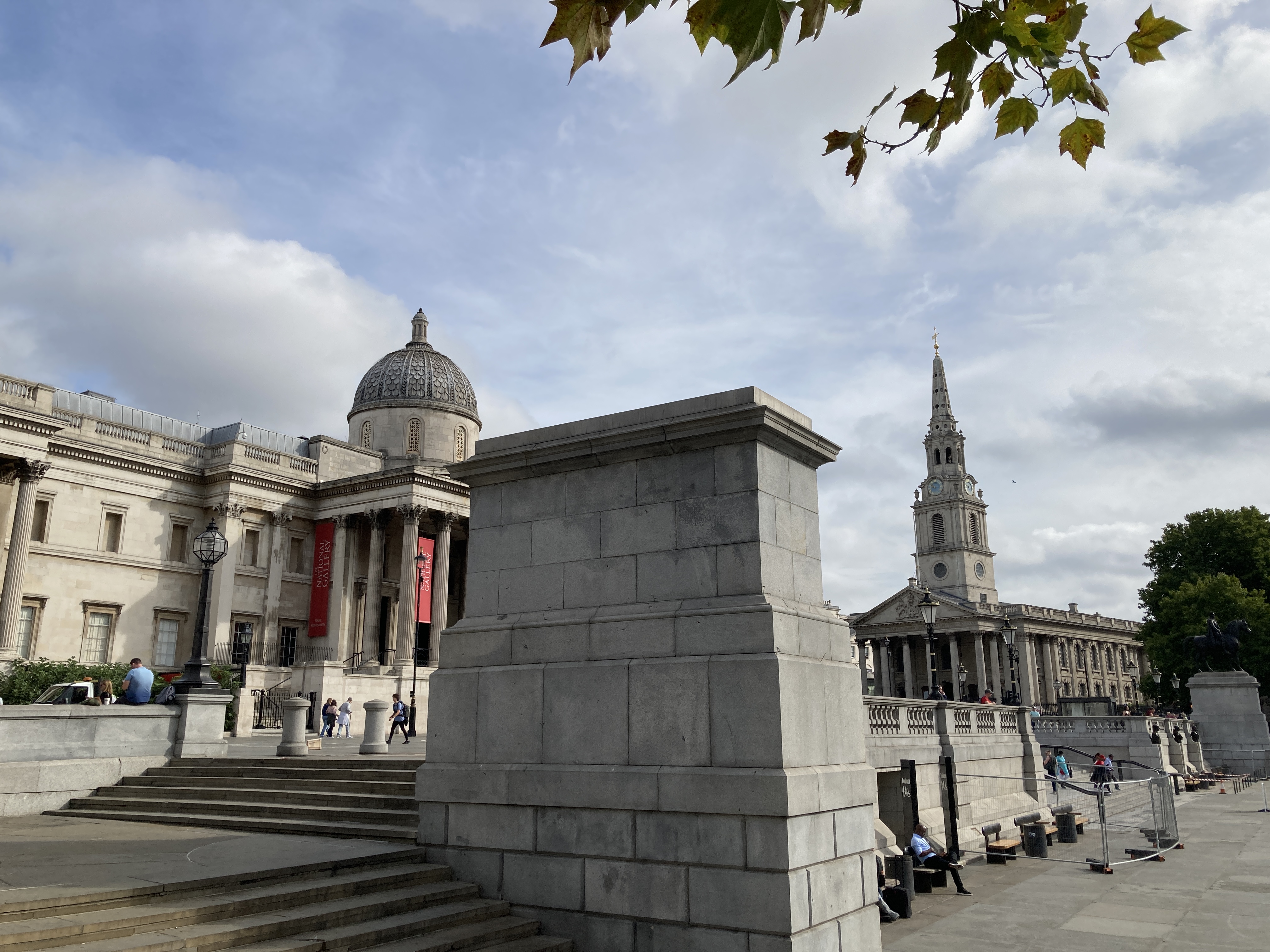|
Trafalgar Square
Trafalgar Square ( ) is a public square in the City of Westminster in Central London. It was established in the early-19th century around the area formerly known as Charing Cross. Its name commemorates the Battle of Trafalgar, the Royal Navy, British naval victory in the Napoleonic Wars over First French Empire, France and History of Spain (1700-1808), Spain that took place on 21 October 1805 off the coast of Cape Trafalgar. The site around Trafalgar Square has been a significant landmark since the 1200s. For centuries, distances measured from Charing Cross have served as location markers. The site of the present square formerly contained the elaborately designed, enclosed courtyard, Royal Mews, King's Mews. After King George IV moved the mews to Buckingham Palace, the area was redeveloped by John Nash (architect), John Nash, but progress was slow after his death, and the square did not open until 1844. The Nelson's Column at its centre is guarded by four lion statues. Severa ... [...More Info...] [...Related Items...] OR: [Wikipedia] [Google] [Baidu] |
Nelson's Column
Nelson's Column is a monument in Trafalgar Square in the City of Westminster, Central London, built to commemorate Vice-Admiral Horatio Nelson's decisive victory at the Battle of Trafalgar over the combined French and Spanish navies, during which he was killed by a French sniper. The monument was constructed between 1840 and 1843 to a design by William Railton at a cost of . It is a column of the Corinthian order, p.100 built from Dartmoor granite. The statue of Nelson at the top was carved from Craigleith sandstone by sculptor Edward Hodges Baily. The four bronze lions around its base, designed by Sir Edwin Landseer, were added in 1867. The pedestal is decorated with four bronze relief panels, each square, cast from captured French guns. They depict the Battle of Cape St. Vincent, the Battle of the Nile, the Battle of Copenhagen and the death of Nelson at Trafalgar. The sculptors were Musgrave Watson, William F. Woodington, John Ternouth and John Edward Carew, resp ... [...More Info...] [...Related Items...] OR: [Wikipedia] [Google] [Baidu] |
Charing Cross
Charing Cross ( ) is a junction in Westminster, London, England, where six routes meet. Since the early 19th century, Charing Cross has been the notional "centre of London" and became the point from which distances from London are measured. Clockwise from north, the routes that meet at Charing Cross are: the east side of Trafalgar Square leading to St Martin's Place and then Charing Cross Road; the Strand leading to the City; Northumberland Avenue leading to the Thames Embankment; Whitehall leading to Parliament Square; The Mall leading to Admiralty Arch and Buckingham Palace; and two short roads leading to Pall Mall and St James's. Historically, the name was derived from the hamlet of ''Charing'' ('Riverbend') that occupied the area of this important road junction in the middle ages, together with the grand Eleanor cross that once marked the site. The medieval monumental cross, the Charing Cross (1294–1647), was the largest and most ornate instance of a chain of me ... [...More Info...] [...Related Items...] OR: [Wikipedia] [Google] [Baidu] |
Cape Trafalgar
Cape Trafalgar (; ) is a headland in the Province of Cádiz in the southwest of Spain. The 1805 naval Battle of Trafalgar, in which the Royal Navy commanded by Admiral Horatio Nelson decisively defeated Napoleon's combined Spanish and French fleet, took place just off the cape. Cape Trafalgar lies on the shore of the Atlantic Ocean, northwest of the Strait of Gibraltar. The International Hydrographic Organization defines the western limit of the strait and the Mediterranean Sea as a line that joins Cape Trafalgar to the north with Cape Spartel to the south. The most prominent structure on the cape is a 34 m (112 ft) lighthouse, which totals 51 m (167 ft) above sea level), the ', which was first illuminated on 15 July 1862. Etymology The name is of Arabic origin, deriving either from ''Taraf al-Ghar'' ( 'cape of the cave/laurel'), or from ''Taraf al-Gharb'' ( 'cape of the west').Richard Burton''The Arabian Nights''(vol. 9)'s footnote 82 In both cases, ''taraf'' () means ... [...More Info...] [...Related Items...] OR: [Wikipedia] [Google] [Baidu] |
Aldermaston March
The Aldermaston marches were anti-nuclear weapons demonstrations in the 1950s and 1960s, taking place on Easter weekend between the Atomic Weapons Research Establishment at Aldermaston in Berkshire, England, and London, over a distance of fifty-two miles, or roughly 83 km. At their height in the early 1960s they attracted tens of thousands of people and were the highlight of the Campaign for Nuclear Disarmament (CND) calendar. Similar demonstrations also took place around the world. The first major Aldermaston march at Easter (4–7 April), 1958, was organised by the Direct Action Committee Against Nuclear War (DAC) and supported by the recently formed CND. Several thousand people marched for four days from Trafalgar Square, London, to the Atomic Weapons Establishment to demonstrate their opposition to nuclear weapons. Hugh Brock, one of the organisers, records that he was one of thirty-five people to have marched to Aldermaston six years before in 1952 as part of Operati ... [...More Info...] [...Related Items...] OR: [Wikipedia] [Google] [Baidu] |
Bloody Sunday (1887)
Bloody Sunday was an event which took place in London, England on 13 November 1887, when a crowd of marchers protesting about unemployment and the Irish Coercion Acts, as well as demanding the release of MP William O'Brien, clashed with the Metropolitan Police. The demonstration was organised by the Social Democratic Federation and the Irish National League. Violent clashes took place between the police and demonstrators, many "armed with iron bars, knives, pokers and gas pipes". A contemporary report noted that 400 were arrested and 75 people were badly injured, including many police, two policemen being stabbed and one protester bayonetted. '''', 15 November 1887, at [...More Info...] [...Related Items...] OR: [Wikipedia] [Google] [Baidu] |
Demonstration (people)
A political demonstration is an action by a mass group or collection of groups of people in favor of a political or other cause or people partaking in a protest against a cause of concern; it often consists of walking in a mass march formation and either beginning with or meeting at a designated endpoint, or rally, in order to hear speakers. It is different from mass meeting. Demonstrations may include actions such as blockades and sit-ins. They can be either nonviolent or violent, with participants often referring to violent demonstrations as " militant." Depending on the circumstances, a demonstration may begin as nonviolent and escalate to violence. Law enforcement, such as riot police, may become involved in these situations. Police involvement at protests is ideally to protect the participants and their right to assemble. However, officers don't always fulfill this responsibility and it's well-documented that many cases of protest intervention result in power abus ... [...More Info...] [...Related Items...] OR: [Wikipedia] [Google] [Baidu] |
South Africa House
South is one of the cardinal directions or compass points. The direction is the opposite of north and is perpendicular to both west and east. Etymology The word ''south'' comes from Old English ''sūþ'', from earlier Proto-Germanic ''*sunþaz'' ("south"), possibly related to the same Proto-Indo-European root that the word ''sun'' derived from. Some languages describe south in the same way, from the fact that it is the direction of the sun at noon (in the Northern Hemisphere), like Latin meridies 'noon, south' (from medius 'middle' + dies 'day', ), while others describe south as the right-hand side of the rising sun, like Biblical Hebrew תֵּימָן teiman 'south' from יָמִין yamin 'right', Aramaic תַּימנַא taymna from יָמִין yamin 'right' and Syriac ܬܰܝܡܢܳܐ taymna from ܝܰܡܝܺܢܳܐ yamina (hence the name of Yemen, the land to the south/right of the Levant). South is sometimes abbreviated as S. Navigation By convention, the ''bottom or down-f ... [...More Info...] [...Related Items...] OR: [Wikipedia] [Google] [Baidu] |
Canada House
Canada House () is a Greek Revival building on Trafalgar Square in London. It has been a Grade II* Listed Building since 1970. It has served as the Chancery (diplomacy), chancery of the High Commission of Canada in the United Kingdom since 1925. History The building which would later become known as Canada House was built between 1824 and 1827 to designs by Sir Robert Smirke (architect), Robert Smirke, the architect of the British Museum. It was originally two buildings used by the Union Club (London), Union Club and the Royal College of Physicians. Under the leadership of High Commissioner Peter Charles Larkin, the Canadian government acquired the Union Club in 1923 for the sum of £223,000.Canada House – the Government ... [...More Info...] [...Related Items...] OR: [Wikipedia] [Google] [Baidu] |
St Martin-in-the-Fields
St Martin-in-the-Fields is a Church of England parish church at the north-east corner of Trafalgar Square in the City of Westminster, London. Dedicated to Saint Martin of Tours, there has been a church on the site since at least the medieval period. This location, at that time, was farmlands and fields beyond the London wall. It became a principal Church of England parish church, parish church west of the old City in the early modern period as Westminster's population grew. When its medieval and Jacobean structure was found to be near failure, the present building was constructed in an influential Neoclassical architecture, neoclassical design by James Gibbs in 1722–1726. The church is one of the visual anchors adding to the open-urban space around Trafalgar Square. History Roman era Excavations at the site in 2006 uncovered a group of burials dating from c A.D. 350, including a sarcophagus burial dating from c. A.D. 410. The site is outside the city limits of Roman London (a ... [...More Info...] [...Related Items...] OR: [Wikipedia] [Google] [Baidu] |
National Gallery
The National Gallery is an art museum in Trafalgar Square in the City of Westminster, in Central London, England. Founded in 1824, it houses a collection of more than 2,300 paintings dating from the mid-13th century to 1900. The current director of the National Gallery is Gabriele Finaldi. The National Gallery is an exempt charity, and a non-departmental public body of the Department for Culture, Media and Sport. Its collection belongs to the government on behalf of the British public, and entry to the main collection is free of charge. Unlike comparable museums in continental Europe, the National Gallery was not formed by nationalising an existing royal or princely art collection. It came into being when the British government bought 38 paintings from the heirs of John Julius Angerstein in 1824. After that initial purchase, the gallery was shaped mainly by its early directors, especially Charles Lock Eastlake, and by private donations, which now account for two-third ... [...More Info...] [...Related Items...] OR: [Wikipedia] [Google] [Baidu] |
Fourth Plinth
The fourth plinth is the northwest plinth in Trafalgar Square in central London. It was originally intended to hold an equestrian statue of William IV of the United Kingdom, William IV, but remained empty due to lack of funds. For over 150 years, its use was debated; in 1998, the Royal Society of Arts, Royal Society for the encouragement of Arts, Manufactures and Commerce (RSA) commissioned three contemporary sculptures to be displayed temporarily on the plinth. Shortly afterwards, Chris Smith, Baron Smith of Finsbury, Chris Smith, Secretary of State for Culture, Media and Sport, commissioned Sir John Mortimer to seek opinions from public art commissioners, critics and members of the public as to its future. Mortimer's final report recommended that there continue to be a rolling programme of commissioned temporary artworks rather than settle permanently on one figure or idea. In 2003, the ownership of Trafalgar Square was transferred from Westminster City Council to the Mayor of ... [...More Info...] [...Related Items...] OR: [Wikipedia] [Google] [Baidu] |
John Nash (architect)
John Nash (18 January 1752 – 13 May 1835) was an English architect of the Georgian and Regency eras. He was responsible for the design, in the neoclassical and picturesque styles, of many important areas of London. His designs were financed by the Prince Regent and by the era's most successful property developer, James Burton. Nash also collaborated extensively with Burton's son, Decimus Burton. Nash's best-known solo designs are the Royal Pavilion, Brighton; Marble Arch; and Buckingham Palace. His best-known collaboration with James Burton is Regent Street and his best-known collaborations with Decimus Burton are Regent's Park and its terraces and Carlton House Terrace. The majority of his buildings, including those that the Burtons did not contribute to, were built by James Burton's company. Background and early career Nash was born in 1752, probably in Lambeth, south London. His father was a millwright also called John (1714–1772). From 1766 or 1767, Nash ... [...More Info...] [...Related Items...] OR: [Wikipedia] [Google] [Baidu] |









